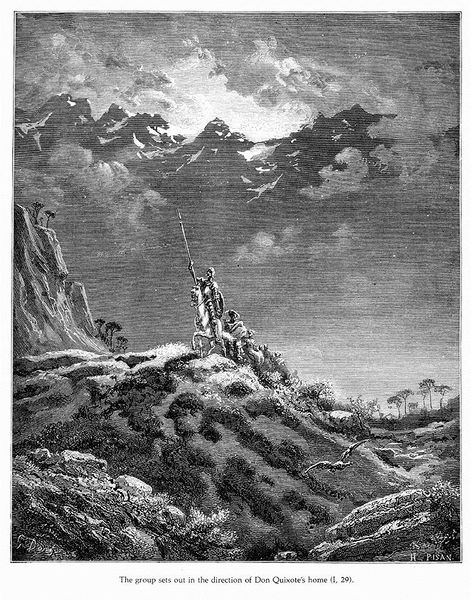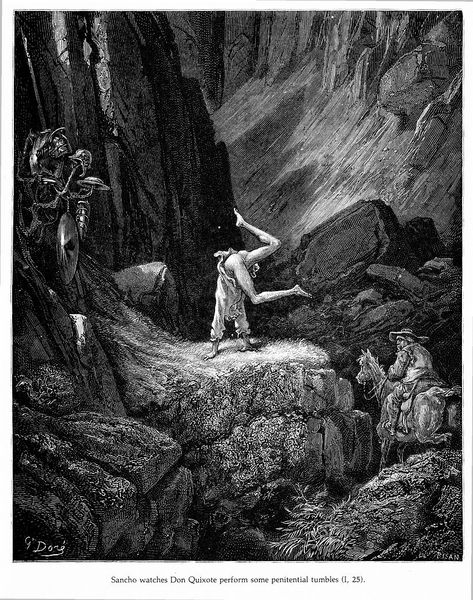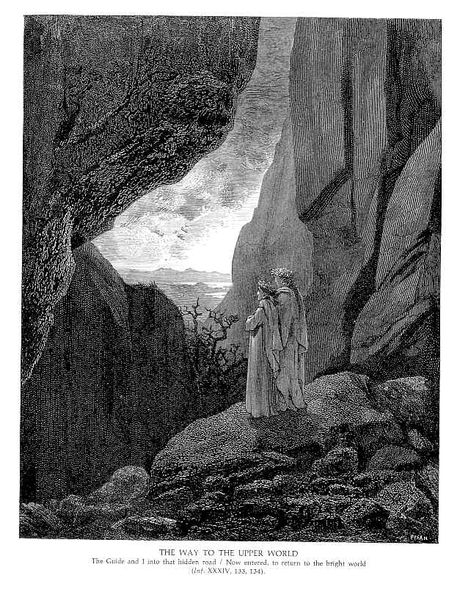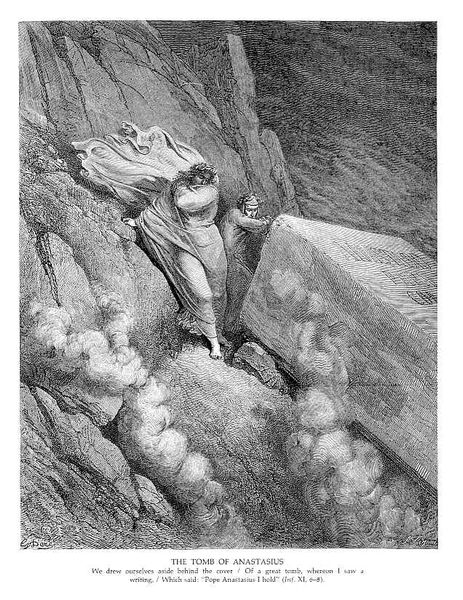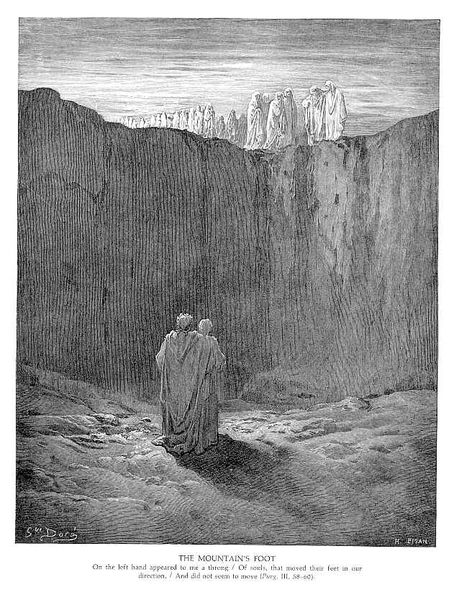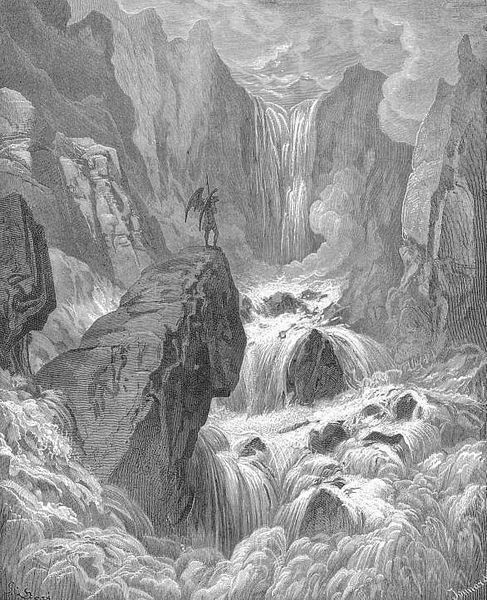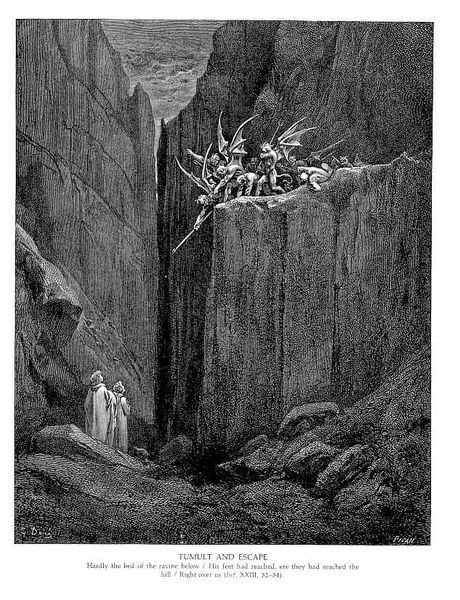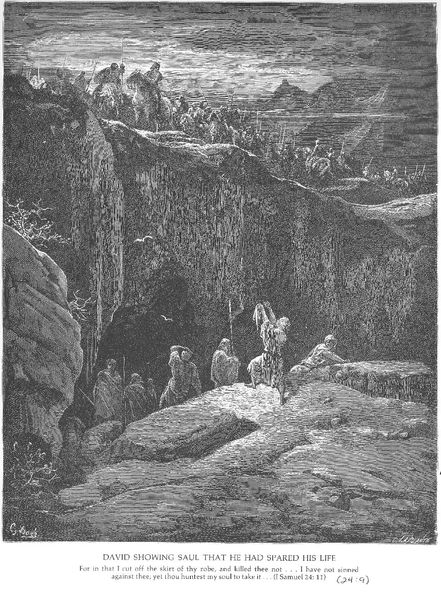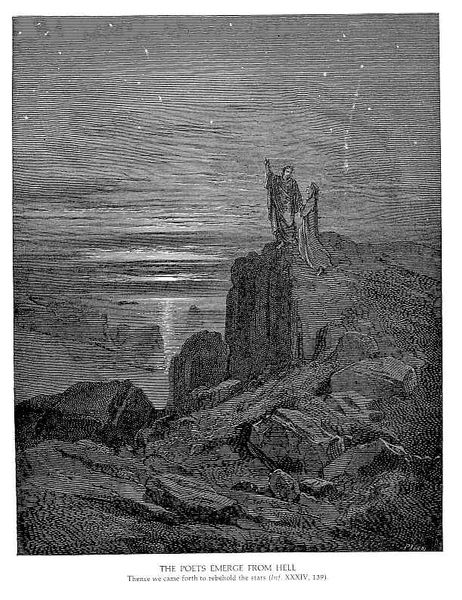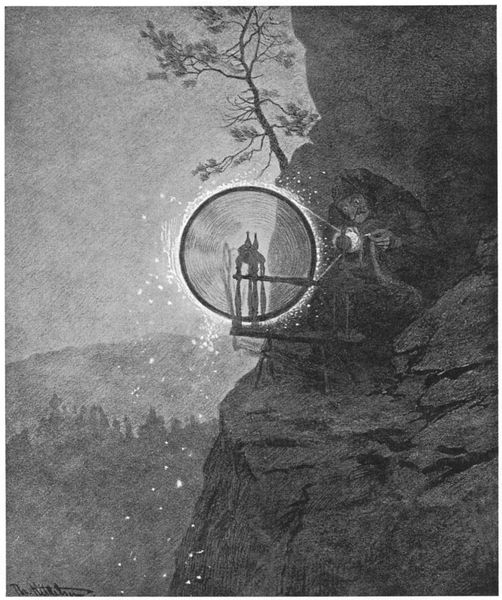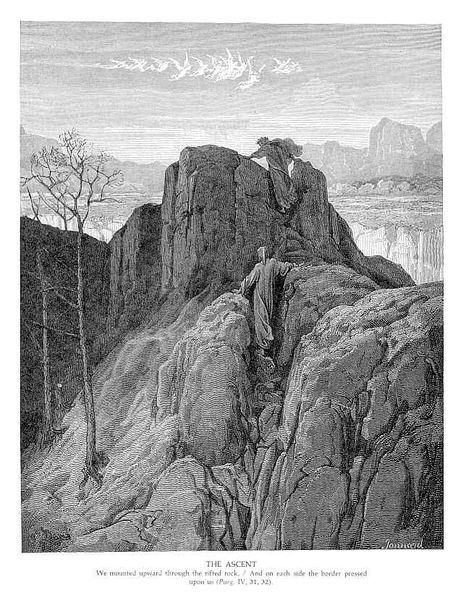
photography, engraving
#
narrative-art
#
baroque
#
landscape
#
photography
#
monochrome photography
#
christianity
#
line
#
history-painting
#
engraving
#
christ
Copyright: Public domain
Curator: Here we have a dramatic engraving by Gustave Dore, titled "The beseech That Moses might report to them his will And terror cease." It depicts Moses high on a mountain, holding up the tablets of the law. Editor: The immediate impression is the sheer desolation, the rugged landscape is palpable through Dore's distinct use of line. It's a monochrome world that makes me think of the materials available for printing and sharing imagery in the past. Curator: Absolutely. Dore masterfully uses line to convey both the tangible harshness of the rocky terrain and the ethereal nature of the divine encounter. Those tablets practically glow, catching the light even in this dark scene. The cultural weight they carry even now, visible across traditions, makes the work extremely moving. Editor: The physical labor inherent in the process strikes me. Think of the engraving process, the transfer of image, the repetitive action of the artisan... that texture comes at a price. Dore wasn't directly producing the work himself; it was mediated through workshops and reproductive processes. What effect does that have on how we view this piece? Curator: That’s a wonderful point about mediated labor, which may add to the symbolic significance—an act of transferring a vision or decree into a repeatable form. The story becomes more accessible. Note how Dore positions Moses, elevated both literally and symbolically. It is important to understand Moses not only as a figure of divinity, but as a pivotal image of governance, leadership and the written law. Editor: The scale here is incredible. Looking at the details reveals more about the conditions that the message traveled in. But by dwelling on production we can remember that images are fabricated not inevitable, laden with significance, and often made for consumption in specific material conditions. Curator: Seeing it this way shows us that the image remains open. By reflecting on both what the symbols convey and the conditions in which it was made, we can learn a great deal about both its origins and possible future paths. Editor: Yes. It reminds us that our encounter with historical art also brings with it layers of labor and industrial conditions—revealing some surprising insights if we just allow it.
Comments
No comments
Be the first to comment and join the conversation on the ultimate creative platform.

